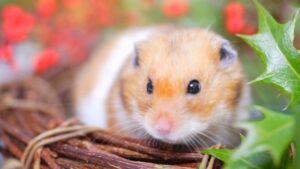
Can You Travel with a Hamster? A Comprehensive Guide
Traveling with a pet hamster isn’t as straightforward as it might seem. It requires careful consideration of your pet’s safety, comfort, and the logistics involved.

When I began, the task of selecting essentials for a natural hamster habitat was daunting.
To ease this process, I’ve assembled an exclusive set of items essential for crafting a ‘Natural Themed’ hamster habitat!
It’s the perfect moment to ignite your enthusiasm! Observing how others set up their enclosures is incredibly beneficial.
Arranging everything to be both functional for your hamster and visually appealing can be more complex than expected. I strongly encourage exploring various online platforms for exemplary hamster habitat inspirations.
Prior to adopting a hamster, it’s crucial to prepare financially for their healthcare. Veterinary expenses can range from minor costs for routine care to significant amounts for surgical procedures. Remember, their small size doesn’t diminish the importance of their wellbeing. Owning a hamster entails a commitment to their health and financial responsibility. Ensure you locate a vet specializing in small animals, and understand the costs involved.
A minimum of 650 square inches of continuous floor space is essential. Smaller breeds like the Roborovski, despite their size, require ample space due to their active nature.
While starting with a smaller habitat, it is understandable, aiming to upgrade to a larger, more suitable space as soon as possible.
Regardless of your choice, ensure it provides adequate space, safety, and comfort for your hamster, reflecting a commitment to their well-being.
Creating activity zones is an excellent strategy to enhance your bond with your hamster and bring variety to their daily life. It’s essential to keep an eye on them during their active periods to ensure they are comfortable and involved, not stressed or looking for a way out.
In the beginning, I used a sizable storage container as a secure play zone for my shyer hamsters. This confined area was equipped with a variety of shelters and passageways, satisfying their natural preference for snug spaces due to their prey nature.
Over time, I transitioned them to a larger, soft, foldable play space. For my most tentative hamster, an especially apprehensive little fellow, I lowered the lighting to create a more reassuring environment for him to discover and enjoy.
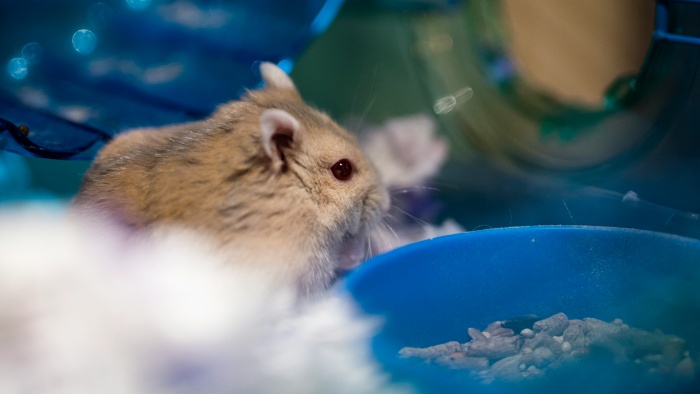
When bringing your new hamster home, a suitable transport container is essential. I recommend a lightweight and secure small pet carrier, ideal for any hamster size. It’s perfect for short trips or visits to the vet.
Another option is a transparent small animal container. Being able to see your hamster during transport can be reassuring. Both types are effective!
Important Tip: Always carry these containers from the bottom to prevent any accidental openings if the lid is not fully secured. In extreme weather conditions, place the carrier inside a cotton tote bag, possibly with a towel wrapped around for added insulation, until you’re safely in your car.
Hamsters have varied preferences, so it’s good to provide a range of sizes, shapes, and textures. Large cork logs are great for Syrians, while medium-sized ones can suffice for Robos and dwarf hamsters, provided they fit in your cage.
For natural products, it’s wise to freeze them for 48 hours before use to eliminate any potential pests.
Many household items can also serve as excellent hamster hideaways, like a terra cotta pot (ensure there are no small holes), a wide-mouth glass jar, or a large coffee mug placed on its side.
Caution: Avoid using flexible bridges vertically as hamsters can get their toes stuck in small gaps. This could be dangerous if they’re left unattended.
A sand bath is a vital feature in a dwarf hamster’s habitat. While Syrian hamsters also enjoy sand for digging, it’s particularly crucial for dwarves, including Roborovskis. I suggest having multiple sand baths in the enclosure.
It’s important to avoid calcium sand and “bathing dust,” as these can harm hamsters. Calcium sand can lead to intestinal blockages if eaten, and bathing dust can cause respiratory issues.
Look for high-quality reptile sand, which is a safe option. There are also hamster-specific sands available from reputable pet supply brands with positive feedback.
You have several choices for containers. A glass baking dish, found easily at thrift stores, is a good option, as are acrylic trays (my favorite), or refrigerator organizer bins.
Be cautious about containers with handles – you don’t want your hamster getting stuck!
There are also specially designed sand baths for hamsters. Ensure you choose a larger size for Syrian hamsters. Dwarf hamsters can use either size, but may need a small ramp or bridge to access it.
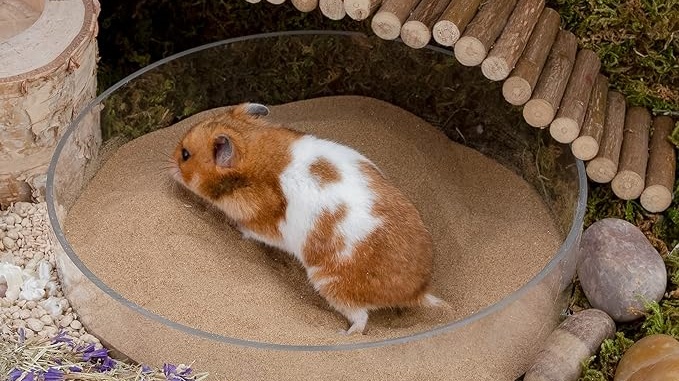
An exercise wheel is crucial for your hamster’s well-being. Hamsters are enthusiastic runners, often covering a distance of five to ten miles each night! There are various wheel types, and finding the perfect fit for your hamster might take some time. Remember, investing in a quality wheel is worthwhile as it tends to last many years.
For Roborovski and dwarf hamsters, an 8-12” wheel is suitable, while Syrians and Chinese hamsters generally need 12” or larger. Interestingly, smaller breeds like robots and dwarfs may sometimes prefer larger wheels.
If your hamster is being thrown off their wheel, consider getting a larger size. This issue often indicates the wheel is too small.
Wheels with cork linings are available. Cork is softer, providing gentler support for their paws. Running on a hard surface every night can lead to bumblefoot, inflammation of the feet, and cork can help prevent this.
Plastic wheels are easier to clean, which is handy as some hamsters seem determined to make their wheels as messy as possible each night!
A multi-room hideaway is an essential element in your hamster’s habitat. In the wild, hamsters naturally construct burrows with multiple chambers, and these hideaways mimic that environment. Most hamsters will adopt a multi-chamber hide as their primary refuge.
For Syrian hamsters, opt for a larger size, while dwarves and Roborovskis can use smaller versions. It’s crucial to include stilts to allow your hamster to burrow underneath without the hide’s weight compressing them.
Adding a cork top is also beneficial. It not only extends the life of the wooden hide but also provides a soft, easy-to-climb surface for your hamster.
If these are unavailable or if you’re on a tight budget (prioritize a quality wheel in such cases), consider crafting one from cardboard. Ensure the cardboard is from an inner layer, not an exterior shipping box which might be coated with disinfectants or dirt. Boxes used for shipping wine are often an excellent choice for this DIY project.
I recommend using white, paper-based bedding to easily identify and clean urine spots. Provide a minimum of 8” depth for dwarf hamsters and 10” for Syrians.
Select unscented bedding to protect your hamster’s sensitive respiratory system and keen sense of smell.
Aspen wood shavings are the only safe wood-based bedding option. While they have a pleasant scent, they might not be suitable for all areas of the enclosure, especially if you have allergies. Aspen can be used in a specific section or mixed with paper-based bedding. Note that some people, including myself, are allergic to aspen, so it’s wise to avoid it if you’re prone to allergies.
Paper-based bedding from other brands is also popular among hamster owners. These alternatives often combine quality and safety.
Hemp bedding is another option, known for its sustainability and affordability. It’s softer than aspen but has a similar texture. I’ve noticed my hamsters don’t prefer it in their burrowing areas, but it’s excellent as an additional texture in digging bins, where they can forage for seeds and other treats.
Many hamster owners enrich their bedding by incorporating orchard grass hay. It’s important to differentiate this from timothy hay, which is pointy and can harm your hamster’s eyes. Orchard grass hay is soft and breaks easily. While some believe it adds structure to tunnels (though no scientific studies confirm this), it certainly introduces a pleasant aesthetic touch.
I personally find orchard grass hay useful for creating engaging activities for hamsters. Due to my allergies, I handle it with a surgical mask.
Sheet moss, often used in reptile habitats, is another excellent addition. It’s visually appealing and soft, making it a comfortable choice for hamsters.
In part of the enclosure, consider adding Eco Earth Loose Coconut Fiber. This lightweight material offers a different texture for digging and playing, though it’s not suitable for burrowing, so it shouldn’t fill the entire cage. Since the bags are usually large, sharing with a fellow pet owner can be a good idea.
Wheat grass is a favorite for hamsters to nibble and dig in. Growing kits are easy to use and are usually very popular with hamsters.
As a precaution, freeze all bedding for 48 hours to prevent any mites from infesting your hamster. I typically store the bedding in large ziplock bags before freezing.
As omnivores, hamsters require a diet with approximately 18-20% protein, slightly higher for younger ones and Roborovskis. A balanced diet can be achieved by combining a full bag of rat and mouse food blocks with a full bag of mixed seeds. Below, you’ll find links to healthy treats ideal for taming, adding to boredom breakers, or scattering in a play area for enrichment.
I recommend freezing all food for 48 hours to prevent bug infestations, a problem I’ve unfortunately encountered.
Research indicates hamsters enjoy a varied diet. Therefore, I often provide my hamsters with small pieces of carrot, lettuce, broccoli, spinach, and scrambled egg (unsalted, plain, and cooled) as treats. Offer small portions of fresh food to prevent hoarding. I like to vary their diet based on what I’m cooking, allowing my hamster to enjoy a diverse range of foods just like I do!
Hamsters naturally enjoy foraging for their food, so scattering their regular food across their enclosure enhances this instinct. Additionally, providing seed sprays and dried floral mixes makes their environment more engaging. Watching a hamster enthusiastically dig into these foraging items is truly delightful.
I frequently visit shops located in the Netherlands, known for its excellent variety of seed sprays and dried floral blends. Their offerings are a hit with my hamsters.
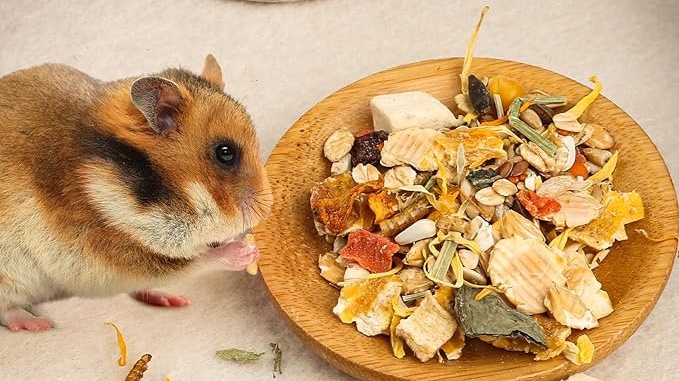
There’s also a well-known pet product line that has recently introduced edible flowers and seed sprays specifically for hamsters. While I haven’t tried these myself yet, my past experiences with this brand have been positive.
It’s important to offer both a water dish and a bottle to your hamsters, ensuring they have a backup in case the water bottle malfunctions. This prevents them from going without water, especially overnight. Plus, some hamsters may show a preference for one over the other.
I opt for a standalone water bottle to minimize escape attempts, as bottles hanging from enclosure sides can tempt hamsters to climb.
For their drinking water, I use distilled water to ensure it’s free from additives like chlorine, providing my hamsters with the cleanest water possible.
Food bowls aren’t a must-have in a hamster’s enclosure. Many hamsters relish the opportunity to forage for their food, and numerous owners prefer to ‘scatter feed’ by sprinkling food around the enclosure, encouraging natural foraging behavior.
However, having a few shallow dishes can be useful for serving wet items like fresh vegetables and fruits, such as apple slices. These dishes help keep these types of food contained and easy for your hamster to access.
Chew toys are essential in preventing overgrowth of hamster teeth. I’ve observed that my hamsters often enjoy nibbling on their chew toys as a pre-sleep ritual, which is quite adorable.
Offering a variety of textures is advisable to discover your hamster’s preferences. In my experience, all of my hamsters have shown a unanimous fondness for a particular type of chew toy, enjoying them immensely.
Maintaining cleanliness in your hamster’s habitat is crucial. I use a sifter to remove waste from the sand bath area and a mini dustpan for keeping flat surfaces tidy. A straw cleaner is handy for cleaning the tips of hamster water bottles, which I do weekly while refreshing their water.
Investing in attractive, airtight containers for food storage is also a good idea. These help to keep the food fresh and prevent any tiny insects from getting in.
A kitchen scale is a valuable asset for regular hamster health check-ups. Monitoring your hamster’s weight on a weekly or bi-weekly basis is an effective way to keep track of their well-being. Additionally, inspecting under their belly to ensure cleanliness is crucial.
For more timid hamsters, like skittish Roborovskis, using a clear plastic cup to gently scoop them up can be a stress-free method to check their underbelly.
Installing cameras in your hamster’s habitat has proven to be immensely beneficial in ensuring their happiness and health. Hamsters can be quite reserved, particularly when they’re new to their environment. These cameras enable you to observe whether they are active and explore their favorite activities without intrusion.
Monitoring the temperature and humidity in your hamster’s habitat is vital for their comfort and health. Maintaining a stable and suitable environment helps prevent stress and health issues.
Having an emergency care kit is essential for prompt responses to any health concerns. This kit should include items like safe hamster first-aid supplies, contact information for your vet, and a guide on common hamster health issues.
Regularly observing and recording your hamster’s behavior can be key in early detection of health or stress-related issues. Note changes in activity, eating habits, and other behaviors to ensure they stay healthy and happy.
Engaging with your hamster through interactive play and training enhances their mental and physical wellbeing. A guide with tips and tricks for training and playing with your hamster can help strengthen your bond and provide stimulating activities.
Establishing a natural hamster habitat requires thoughtful consideration of various elements ranging from the right size and type of enclosure, to ensuring proper nutrition, hydration, and mental stimulation for your little companion.
By closely observing and understanding their unique needs, such as appropriate bedding, exercise wheels, and foraging opportunities, you can create a thriving environment.
Remember to also prioritize health monitoring, with regular weigh-ins and a prepared emergency care kit.
Lastly, the joy of engaging with your hamster through interactive play and training should not be underestimated, as it strengthens the bond between you and enhances their overall well-being.
Embracing these aspects will lead to a fulfilling and enriching experience for both you and your hamster in their natural habitat.
If you feel that the steps in the article are too cumbersome, you can watch the following videos we have carefully selected for you to make:


Traveling with a pet hamster isn’t as straightforward as it might seem. It requires careful consideration of your pet’s safety, comfort, and the logistics involved.

Finding the best hamster cage for Syrian hamster is crucial, as these curious, low-maintenance, and independent pets thrive in the right environment. The primary concern

Have you ever wondered, “Are hamsters happier in bigger cages?” Generally YES. It’s a question that might seem straightforward, but there’s more to it than

Hamsters, the small, furry, and often nocturnal creatures, have been popular pets for many years. They are known for their playful nature and ease of
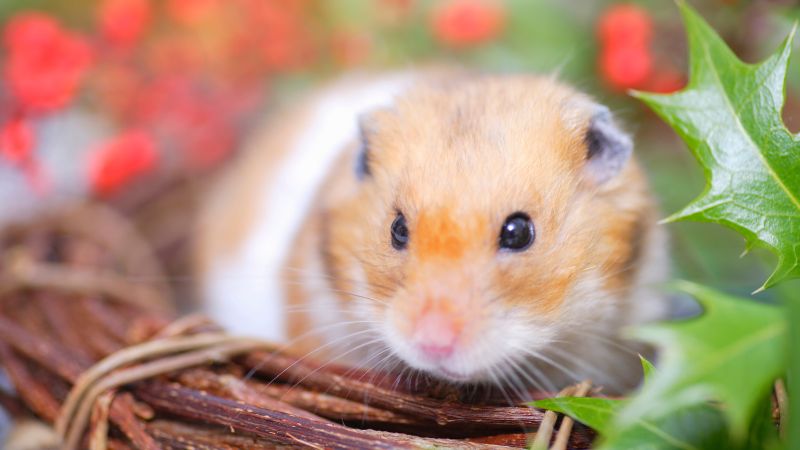
Traveling with a pet hamster isn’t as straightforward as it might seem. It requires careful consideration of your pet’s safety, comfort, and the logistics involved.

Finding the best hamster cage for Syrian hamster is crucial, as these curious, low-maintenance, and independent pets thrive in the right environment. The primary concern

When I began, the task of selecting essentials for a natural hamster habitat was daunting. To ease this process, I’ve assembled an exclusive set of

Have you ever wondered, “Are hamsters happier in bigger cages?” Generally YES. It’s a question that might seem straightforward, but there’s more to it than
Copyright © 2025 woodhamstercage. All Rights Reserved.